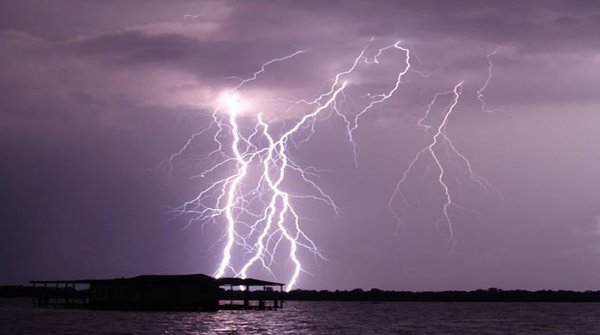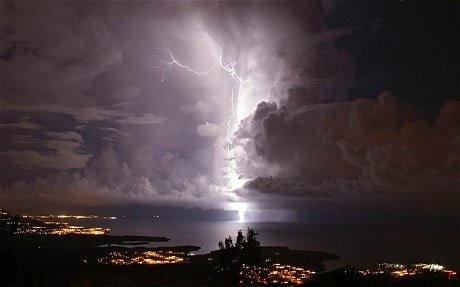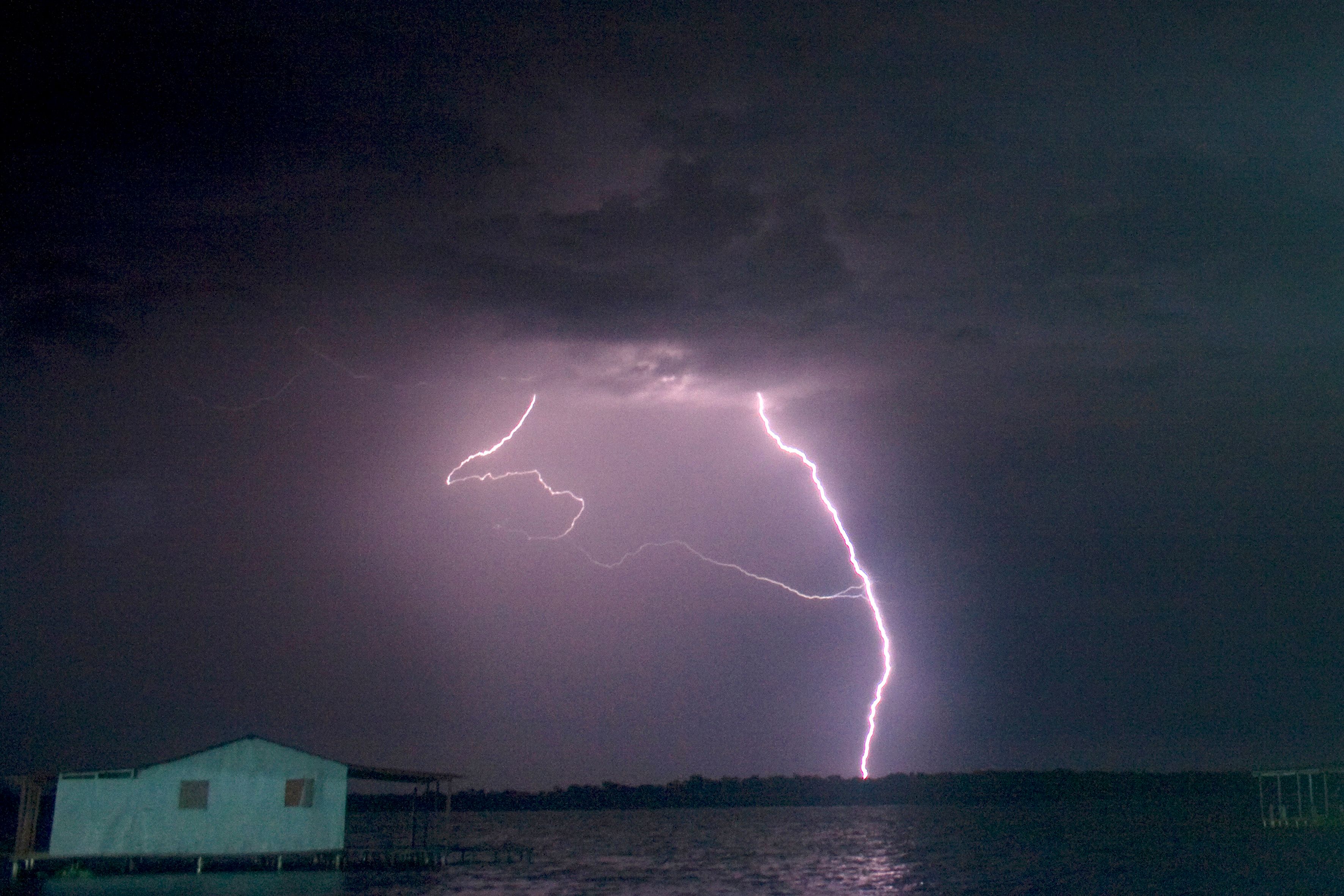The Lightning of the Catatumbo is a group of electrical storms that happen 260 nights to the year in all the basin of the Lake of the Maracaibo, in the West of Venezuela. It is called Catatumbo Lightning, because from a distance the different storms seem to be one, tending to be located more frequently near the mouth of the Catatumbo River, in the southwest of the Lake. Occasionally it is called the Maracaibo Lighthouse, since its permanence in the area has served as a guide for sailors, fishermen and travelers since the time of the Colony.
Since about 500 years ago, the appearance of this electro-atmospheric phenomenon of singular characteristics has been recurrently reported in an extensive area of more than 226,000 hectares located on the southwest coast of Lake
Maracaibo, Venezuela. There is no observational evidence that it always occurs in the same location, but that the epicenters are scattered throughout the aforementioned area.
 Source
Source
Being the area of occurrence of the event of just under 2500 km2 it is not surprising that the multiple epicenters appear from afar to be a single phenomenon, visible, according to some reports [Centeno, 1968], from the Caribbean Sea. This fact has given the event in question fame beyond the Venezuelan borders, there are some researchers who describe it as the "first natural beacon on the planet".
The region that corresponds to the swamps of the Ciénagas de Juan Manuel National Park is bounded on the north by the Santa Ana river basin, and on the south by the Catatumbo, on the east it borders the Flora and Fauna Reserve of the Ministry of the Environment in where palafíticas populations are located like Congo Viewpoint, to borders of the Lake of Maracaibo, and by the West it adjoins with herds and haciendas near the Regional Road No. 6, that unites the populations of Machiques with Casigua The Cube. The basins of the Bravo and Concepción rivers and the La Negra, La Belleza, La Bellecita, El Zamuro and La Estrella basins (the most extensive of all) lie within it. It is a swampy ecosystem, with depths between 1 and 5 meters, and average annual temperatures between 28 ºC and 32 ºC.
 Source
Source
One of the aspects that most interest awake today the Catatumbo Lightning is related to the possibility or not that the electro-atmospheric event regenerates the ozone layer. It is a controversial issue since electrical storms, although they generate an amount of ozone (and NOx), are produced in the troposphere, while the ozone layer is located in the stratosphere. Indeed, while the troposphere usually reaches about 8 km above sea level, for tropical latitudes it can reach up to 16 km. There, where the troposphere ends (the tropopause being the interface) begins the stratosphere that can reach up to about 50 km in height. For equatorial latitudes, the ozone layer is between approximately 24 and 28 km.
Since the average speed of ascension of an air globule is about 20-30 meters per day, the typical time it would take for an air cell to ascend from the top of the troposphere to the height of the ozone layer is estimated in at least 6 months. However, the average life time of ozone produced by electric discharges is of the order of hours, so it is not clear how the Catatumbo Lightning can regenerate the ozone layer.
It is always a pleasure to talk about the wonders of my beloved land Venezuela, I hope you liked the presentation, bye.
Have a wonderful day.
Reference:
Note: @sirknight started a contest and its daily topics are:
Sunday-light
Monday - Darkness
Tuesday-AnimalDeer
Wednesday-Structures
Thursday-ForcesNature
Friday-AmorBellezaFreedom
Saturday-Agriculture


